Pictures are worth a thousand words. We’ve taken many opportunities over the past 9 months to capture different stages of the development – from office space to CT suite. Check out this stunning transformation.
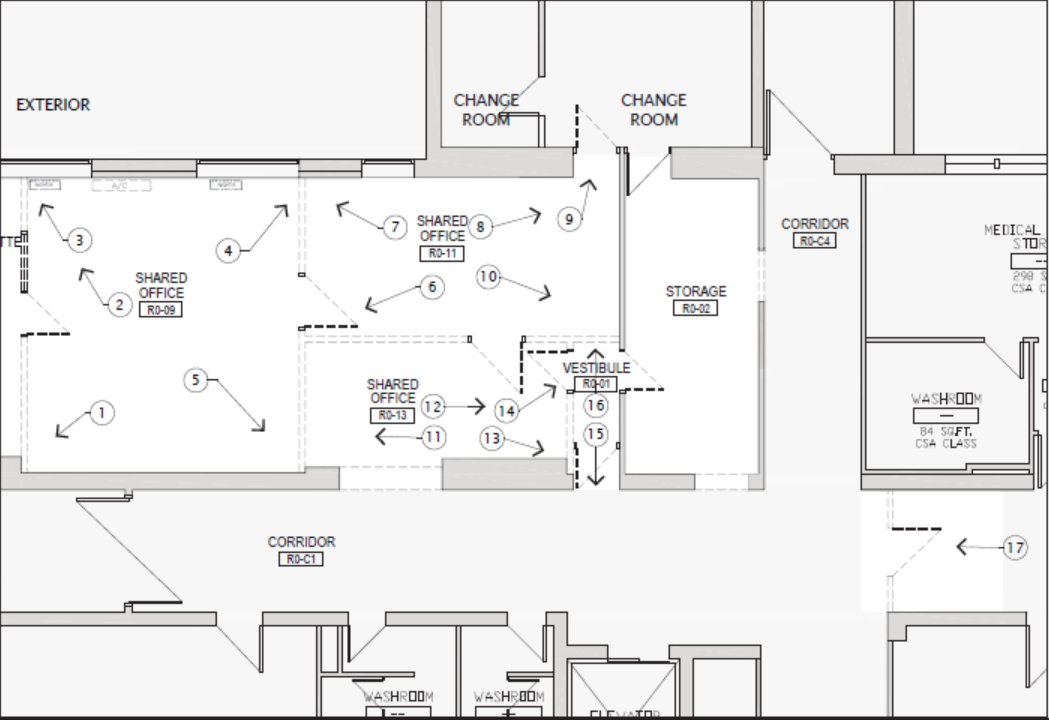
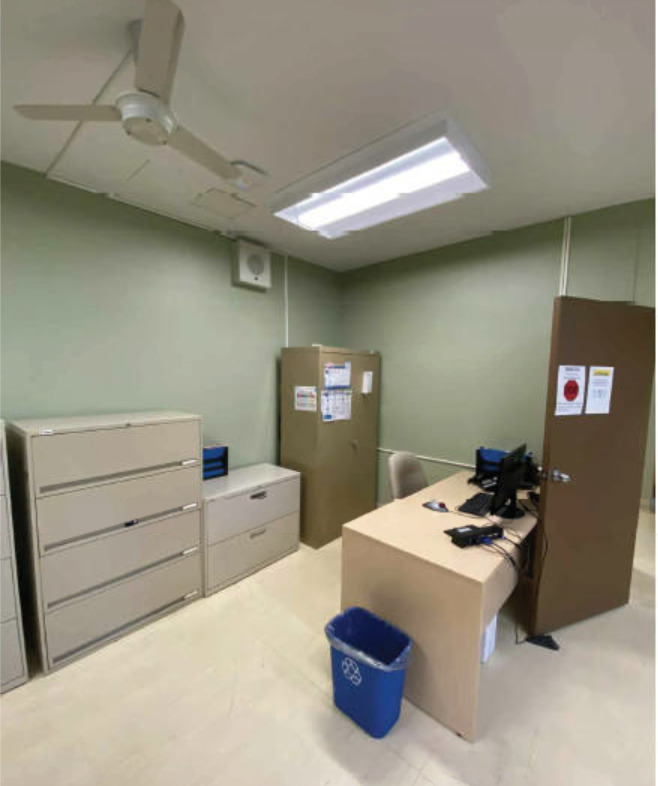
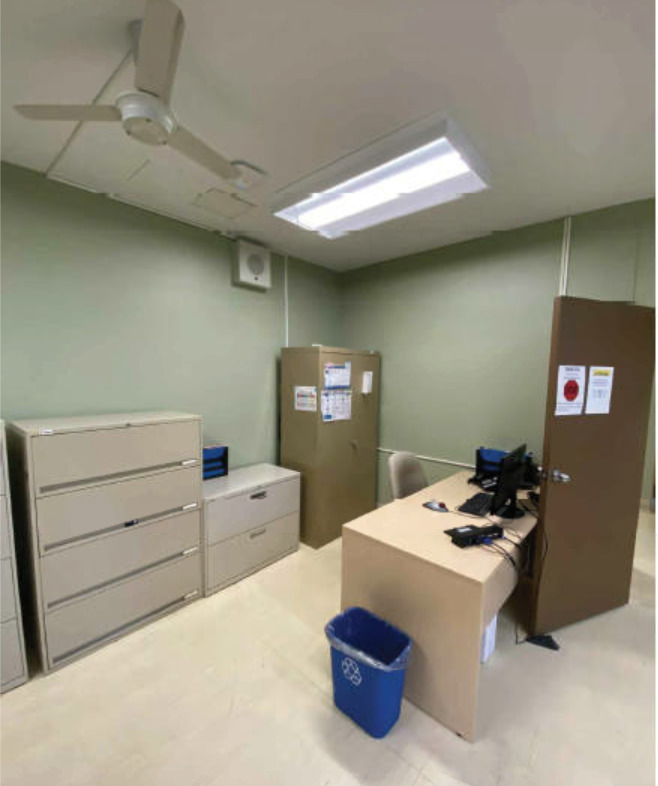
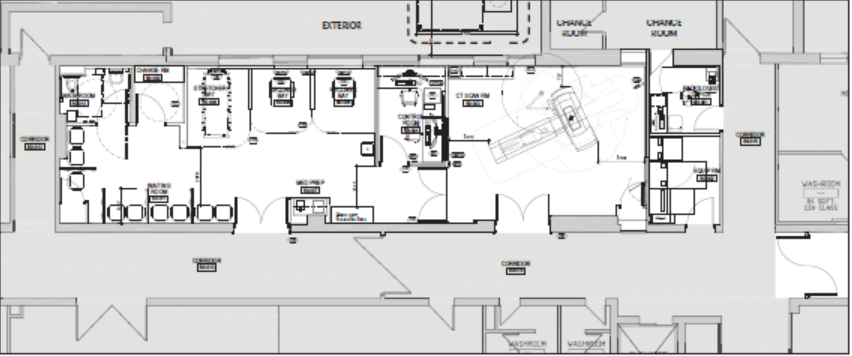
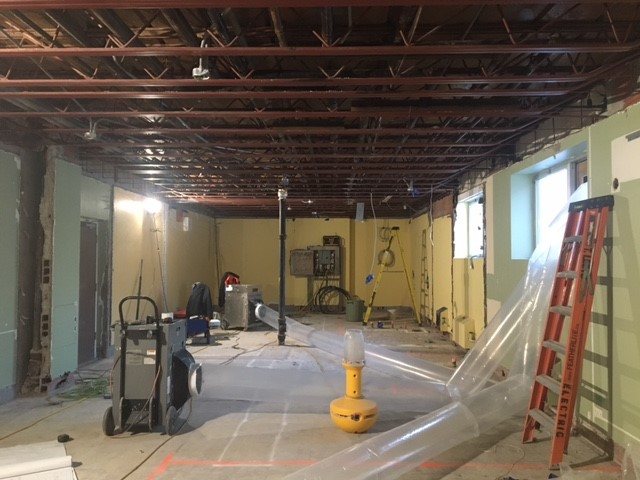
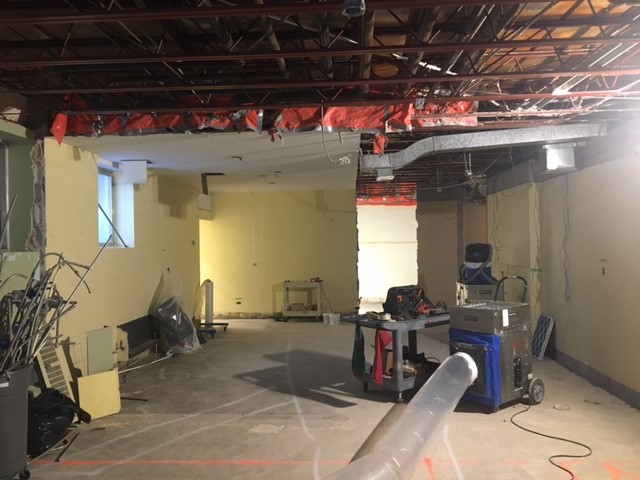
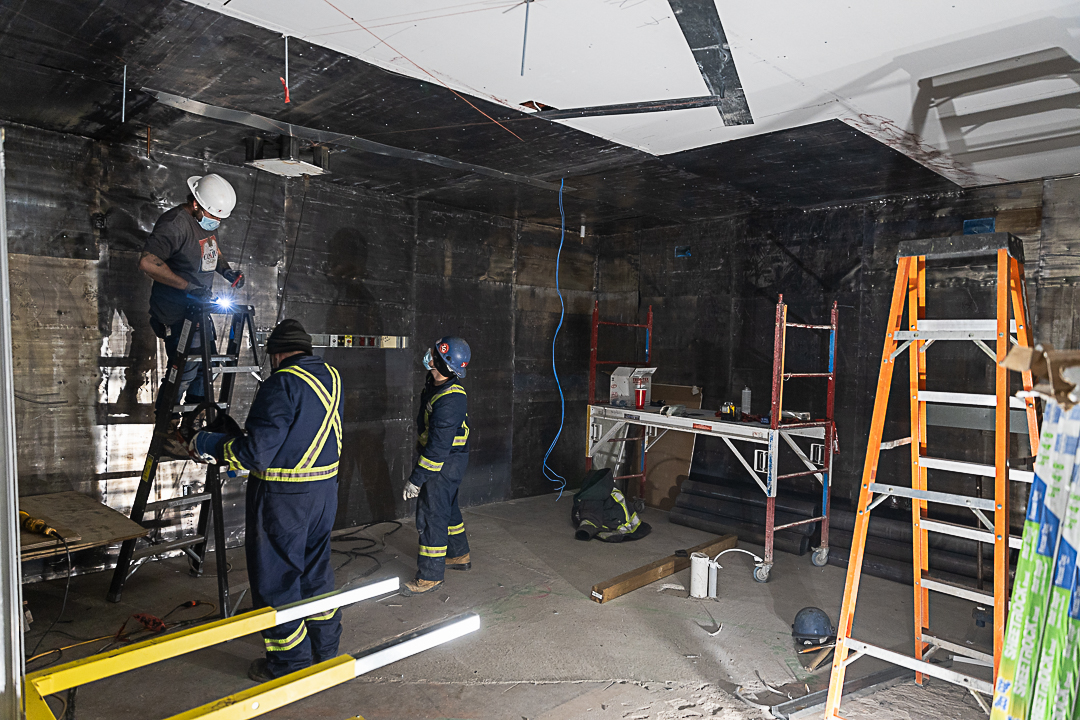
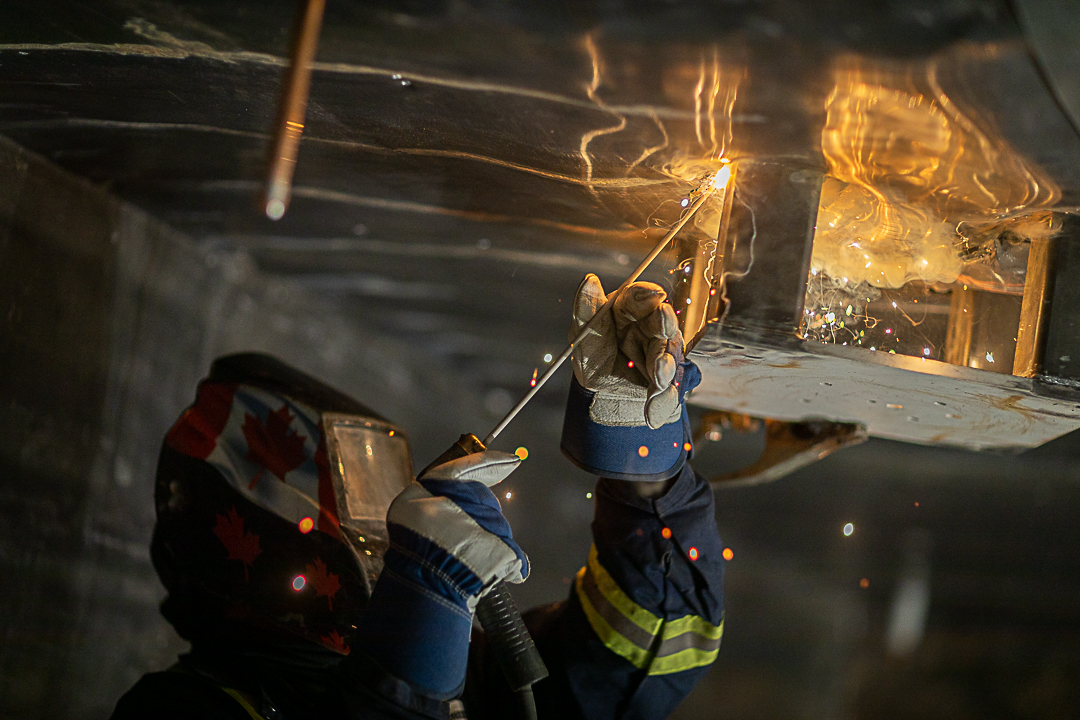
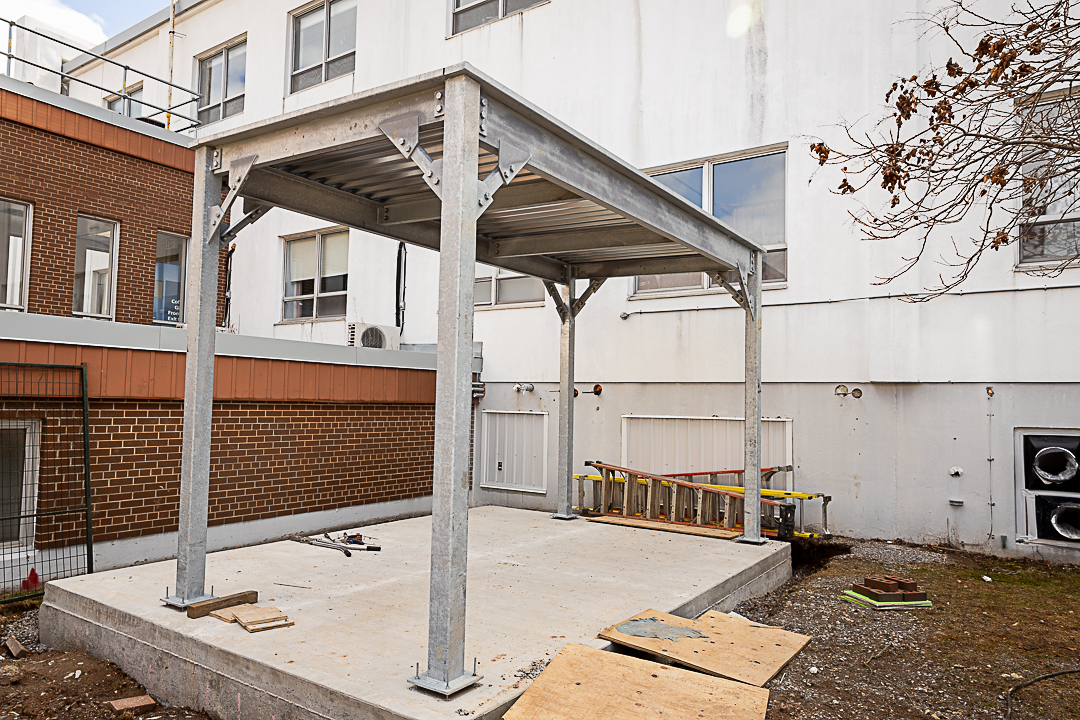
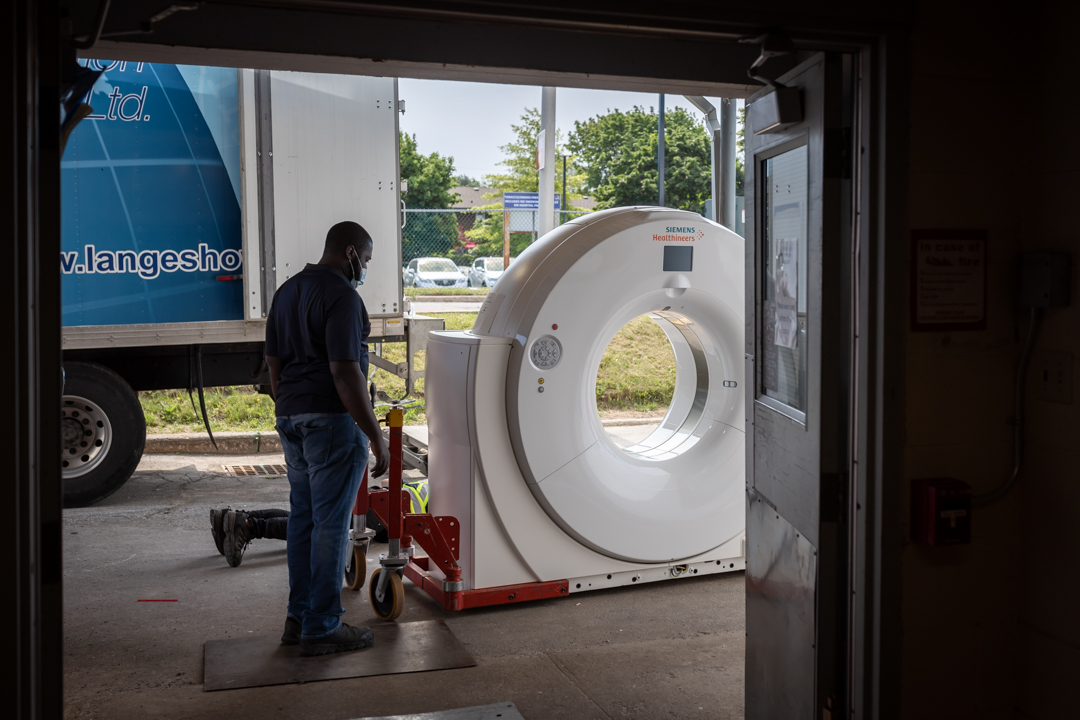

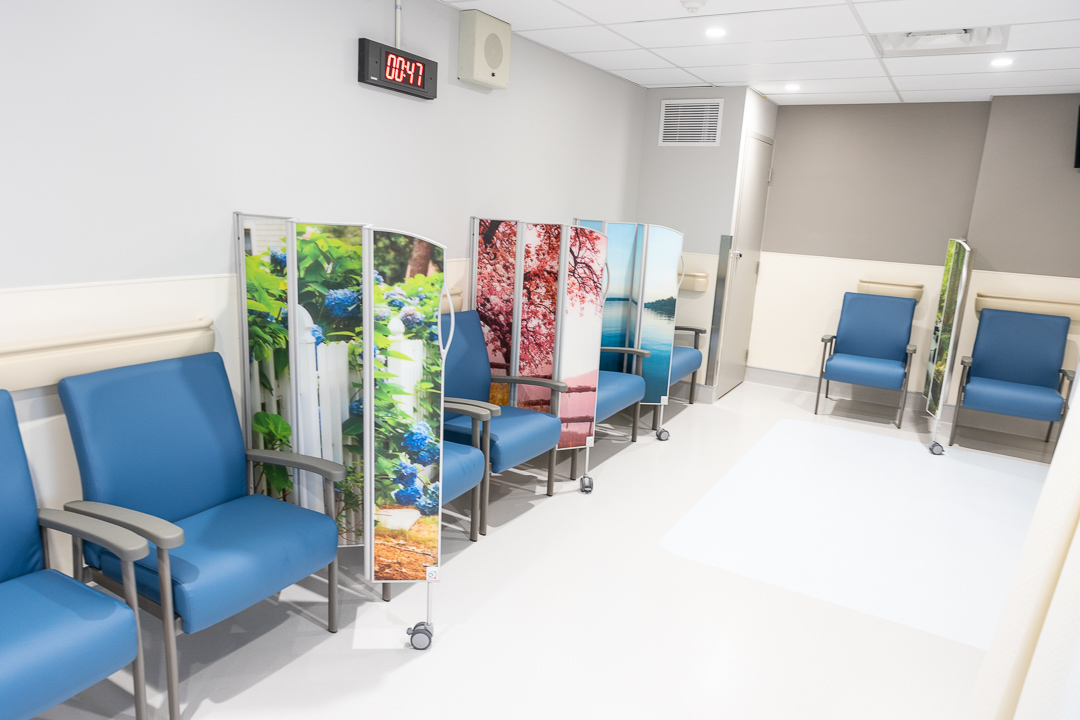
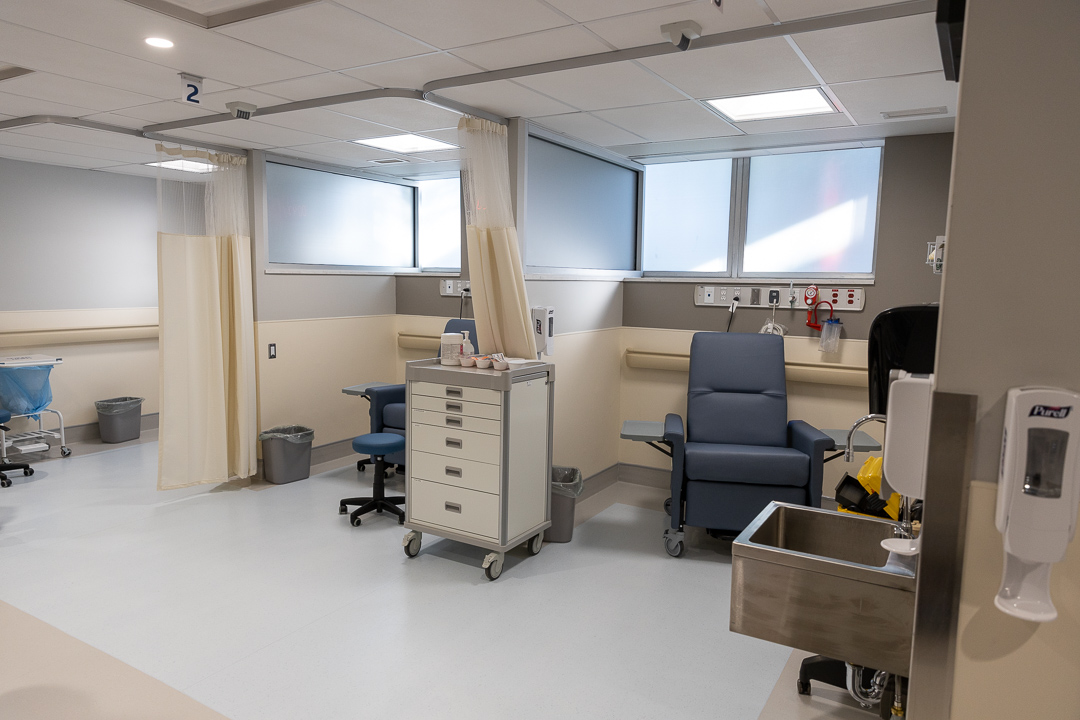
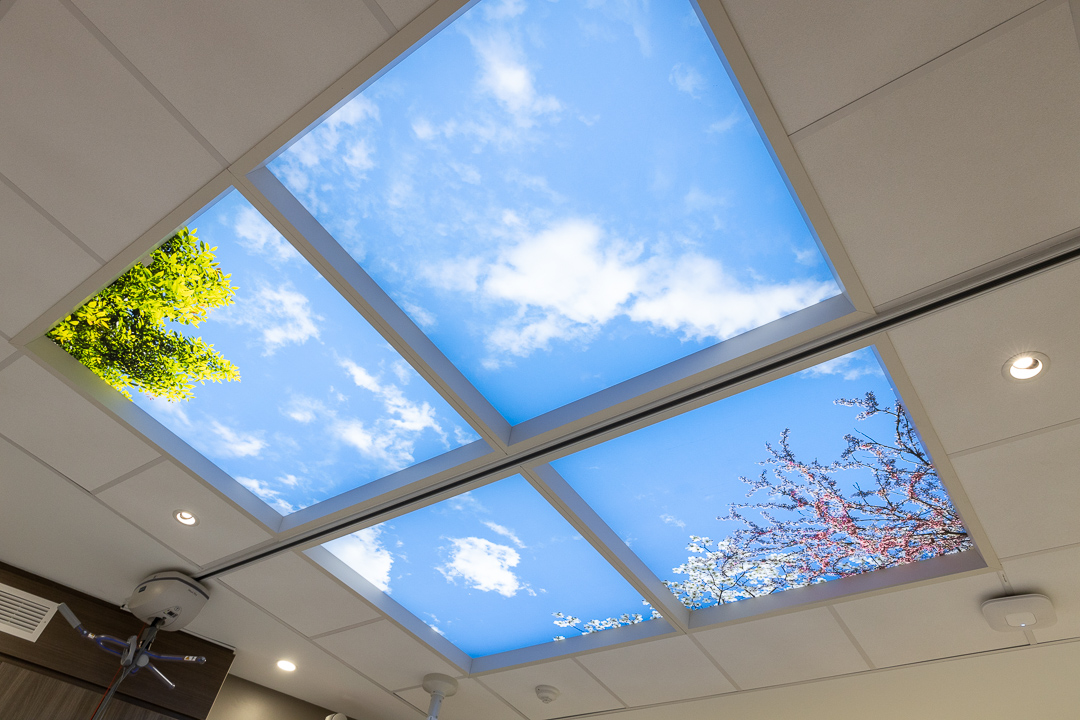
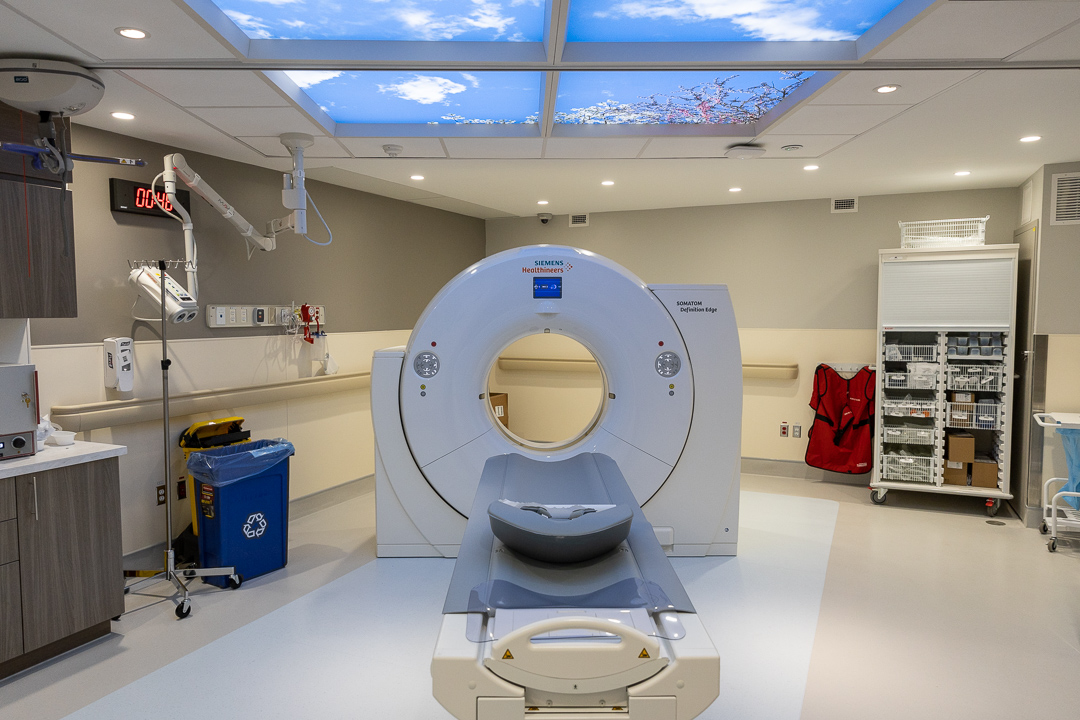
Pictures are worth a thousand words. We’ve taken many opportunities over the past 9 months to capture different stages of the development – from office space to CT suite. Check out this stunning transformation.















Sarah Romeril has held a variety of roles across her 11 years of nursing practice. She started her career working at the Hamilton General Hospital site before moving to a position in the Emergency Department (ED) at Joseph Brant Hospital all the while working at Carpenter Hospice in Burlington. When a nurse clinician position opened up with the Niagara West Palliative Care Team (NWPCT) in 2018, she saw a wonderful opportunity. For Romeril, who holds a Masters of Nursing degree and is specialty certified, the holistic, patient-centred nature of palliative care drew her practice toward this speciality. Sarah is an Assistant Clinical Professor in the School of Nursing at McMaster University and an Associate Member of the Division of Palliative Care hosted by Department of Family Medicine which serves the whole Faculty of Health Sciences at McMaster University. She is also a member of palliative care nursing associations regionally, provincially and nationally.
What led you to pursue a career in palliative care?
I held student placements during my undergraduate studies and remember feeling like palliative care is an area which deserved more system-level focus and improvement. Patients come to the ED with complex illnesses, some with multiple admissions and struggle to navigate the system. Over time there can be real sense of a loss of identity within standardized care. I felt there were opportunities to improve the care experience for patients, particularly with earlier integration of palliative care. Practicing palliative care gives me the privilege to care for patients and families across all age groups, with varieties of illnesses, to help personalize their end-of-life journeys and improve their quality of life.
Tell us about the Niagara West Palliative Care Team, how it operates and the services it provides:
The NWPCT is a population-based shared care model providing comprehensive palliative care to patients with life-limiting illnesses. We’re an interprofessional team of two physicians, the nurse clinician role, a navigator, two counsellors, and home and community care coordinators; we are a teaching team providing educational opportunity and support to learners. We believe in meeting the patient where they are at and we work across care settings throughout West Niagara. This means we follow patients across their journey including hospital, home, long-term care, retirement homes and/or hospice. We are well partnered and integrated within the system locally and regionally.
The NWPCT model is integrated within other health-care models delivered at West Lincoln Memorial Hospital, which focuses on primary care capacity building. We partner with primary care physicians and nurses to help them grow their palliative care skills and provide customized support.
What does a day in the life of a palliative care nurse clinician look like?
No two days are the same. We work together as a team to ensure we have holistically met the needs of patients and families. Clinically, we spend a lot of time in the community consulting with and caring for patients. Our work involves providing comprehensive clinical services such as pain and symptom management. It involves system navigation, making patients aware of available services and helping connect them with what they need. We help patients and their families with advance care planning to determine their end-of-life needs and wishes. We also offer psycho-spiritual support to patients to help them and their families through the journey, including bereavement support. It’s an honour to be able to help people fulfil their end-of-life goals, while being there to support the family through the process as well.
This role also includes opportunity to integrate principles of advance practice nursing through innovation, education and facilitate systems level advocacy and support.
What’s your philosophy toward palliative care?
Every person should have access to palliative care to support their journey with a life-limiting illness. Early integration of high-quality, comprehensive palliative care is critical to achieving this vision. Evidence shows that early integration can improve outcomes and quality of life. It also helps to removes the burden of navigating the health care system while personalizing the patient’s care.
The NWPCT values and is grateful for its strong relationships with many partners, both local and across the region, which help ensure Niagara West residents’ needs are being met. This includes primary care, home and community care, McNally House Hospice, Rose Cottage, emergency services and WLMH. The community of care providers in West Niagara is amazing.
What are three things you feel people should know about palliative care?
WLMH is currently in the planning stages toward being rebuilt. Will the new WLMH enhance the NWPCT’s ability to serve patients?
Our team has been involved in the planning for the new hospital. We’re looking forward to new opportunities in the future hospital to further develop and create new partnerships with other care providers. The team is committed to new innovations and opportunities to meet emerging needs of the West Niagara community, which is home to one of the fastest-aging populations in Ontario.
We’re also looking forward to some of the technology that will be in place when the new hospital opens. Our team works out in the community and collaborates with a variety of care providers for each patient. Some of the new technologies being brought in like Odyssey (the initiative to operationalize HHS’ incoming hospital information system) will give increased access to real-time information, system access and communication with other care providers. Tools like this can enhance the way care providers work and the care we can provide to our patients.
Q. The Stage 3 submission was sent to the Ministry of Health in late March for approval. Where does that currently stand?
A. Our team has been engaged in discussion with the Ministry about the submission. This is normal. Everyone is working toward the same goal of planning and building a great hospital. All parties are working as fast as possible to achieve that goal.
Q. When do we anticipate Stage 3 approval?
A. Approval is expected imminently.
Q. What happens after the Stage 3 submission is approved?
A. Refining the RFP documents has continued since the Stage 3 plan was submitted. The Stage 4A (Approval to Request for Proposal) was submitted to the Ministry on May 28. Final revisions and reviews will continue into mid-June, and we are also preparing for the tendering period.
Q. When will the RFP for the design-build team be posted?
A. Ministry direction is to post the RFP on June 28, which is almost a week earlier than originally scheduled.
Q. What happens in Stage 4?
A. The three design-build team candidates will receive the tender documents on June 28. This launches us into formal design presentations from each team as they develop their proposals. Those presentations are followed up with design documents which will be checked for compliance and feedback, and then returned to the teams to progressively elaborate on their designs. This will continue until the proposals are received late fall 2021 at which point there is an extensive evaluation and negotiation process with the preferred proponent, leading to a contract to design-build-finance the project.
Q. What happens during the RFP period? Is there any contact between the hospital and the bidding teams?
A. There are regular touchpoints between the hospital, Infrastructure Ontario (IO) and the three individual teams while the RFP is posted. These conversations will inform the teams’ bids. The procurement process will be overseen by a third-party to ensure transparency and confidentiality are maintained.
When people think about building a hospital, the shiny new building from a project’s renderings often come to mind. Construction-related comments like “shovels in the ground” or “opening the doors” are tossed around in casual conversation.
Less attention is paid to the thousands of critical items which make the hospital function. Operating tables, IV pumps, task chairs, stretchers, ultrasound machines, waiting room seating, scalpels. In the hospital sector, these items are referred to as furniture, fixtures and equipment, or commonly just “FF&E” and are absolutely essential for the care that’s provided.
Calculating the FF&E needed for a new hospital is complex, but is also similar to how a family would figure out the décor in their home.
“Think about your living room and all the items in it. You have a couch, chairs, coffee table, maybe a lamp or two, some shelves, possibly a TV, area rug, artwork, books. If you were to move, you’d look at your furnishing and based on their condition and the space in the new house, which should be kept or replaced. That’s essentially what needs to be done when planning for every room in a new hospital,” said Bart DeVries, HHS director of redevelopment.
Knowing what we’ll need starts with knowing what we currently have and what can be transferred to the new building. To help with this process, hospital redevelopment teams lean on industry experts.
“Our team went in last June and did a complete inventory of the existing assets. Each item was tagged, barcoded and logged so we could conduct an assessment for transferability to the new building. Each asset is evaluated individually looking at its age, service history, compatibility in the new space and its current condition,” said Larry Rook, an advisor from Colliers Project Leaders.
Did you know? Approximately 3,500 items were tagged in this process at WLMH.
Once the cataloguing and assessment is done, the team needs to determine what is missing and what needs to be purchased, taking into account the needs and spaces in the new hospital.
For example, the current WLMH has two operating rooms. The new hospital will have four. Even if every item from the existing operating rooms were transferred (and much of it is new so it will be) outfitting would be needed for the two new rooms regardless.
Other factors play into the decisions as well. Timing is a big one.
“You can’t move the contents of an entire hospital to a new building overnight. There will be a period of overlap when the new hospital opens and both hospitals are still operating. The emergency department, for example; if you arrive at 5:59 a.m. at the old site on ‘move day’ you are cared for there and then transferred to the new hospital later. The new site opens at 6:00 a.m. on move day so all patients after that time are seen there. The result is that some items will be bought new to ensure continuity of operations,” noted Rook.
FF&E for a new hospital can carry a hefty price tag. The multi-million dollar question becomes: who covers this cost? It depends on whether the items are considered “fixed or loose.”
“Generally, fixed items are anything that wouldn’t fall out of the building if you were to pick it up and turn it upside down. Ceiling-mounted surgical lights are a good example. Those are considered to be part of the building and are captured in the construction costs because structural supports need to be provided by the contractor and they have hard-wired electrical connections. Everything else that would shake out are considered loose and the Ministry doesn’t pay for those,” said DeVries.
Related: Take it to the Finish…Building a Healthy Community campaign website
The loose items are funded through the “local share of financing” for the new hospital. In Ontario, new hospitals are cost-shared between the Ministry of Health and the local community which the hospital serves. The local share is the portion the community is required to cover. For more on that, read this.
The more equipment that’s transferred means less will need to be bought new to open the hospital.
“FF&E costs are a big part of the local share of financing. For the WLMH redevelopment, we’ll be able to transfer almost 40 per cent of the total equipment required, which, compared to other hospital projects, is a considerable amount,” said DeVries, noting that all of the furniture in the new hospital will be bought new.
Today, Infrastructure Ontario (IO) and Hamilton Health Sciences (HHS) announced that three teams have been prequalified to design, build and finance the West Lincoln Memorial Hospital (WLMH) redevelopment project.
Teams were prequalified based on criteria identified in a request for qualifications process that began in November 2020. Selection criteria included design and construction capability, experience, qualified personnel and financial capacity to undertake a project of this size and scope.
The prequalified teams and their prime team members are:
AMICO SACYR ALLIANCE
• Applicant Lead: Amico Design Build Inc. (50%), Sacyr Construction S.A (50%)
• Design Team: IBI Group Architects Canada
• Construction Team: Amico Design Build Inc. (50%), Sacyr Construction S.A (50%)
• Financial Advisor: Operis Business Engineering Limited
ELLISDON INFRASTRUCTURE HEALTHCARE
• Applicant Leads: EllisDon Corporation
• Design Team: Parkin Architects Limited
• Construction Team: EllisDon Corporation
• Financial Advisor: EllisDon Capital Inc.
POMERLEAU HEALTHCARE PARTNERS
• Applicant Lead: Pomerleau Inc.
• Design Team: Cumulus Architects Inc, WalterFedy
• Construction Team: Pomerleau Inc.
• Financial Advisor: Pomerleau Inc.
A request for proposals (RFP) is expected to be issued to these prequalified teams in summer 2021. Once submissions are received, IO and HHS Sciences will evaluate the proposals, select a preferred team and then negotiate a final contract. The successful team is expected to be announced in spring 2022. A fairness monitor will oversee the entire procurement process.
“The WLMH RFQ generated interest from leading private-sector teams who want to bring this exciting project to life. Together with Infrastructure Ontario, we are encouraged by the quality of submissions received and look forward to seeing the full proposals from the shortlisted teams in the coming months. By this time next year, the successful design-build team will be selected; one of the final pieces before getting shovels into the ground.”
Kelly Campbell, VP Corporate Services and Capital Development, Hamilton Health Sciences
“The selection of three highly qualified teams to move on to the request for proposals stage is a significant project milestone. Through IO’s P3 process, we are confident these teams will submit competitive bids that will result in the delivery of a state-of-the-art hospital to serve West Niagara for years to come. We are delighted to once again partner with Hamilton Health Sciences as we set our collective sights toward breaking ground in spring 2022.”
Angela Clayton, President, Project Delivery, Infrastructure Ontario
“This is good news for Niagara West residents who have worked hard with HHS and WLMH team to ensure that this new facility moves forward. The Ontario government is committed to delivering this important project for Niagara West; and investing in healthcare across our region. My thanks goes to all who have put so much work into getting to this point, and my congratulations goes to those who have pre-qualified for this infrastructure build. I will keep supporting this build in any way I can!”
Sam Oosterhoff, MPP, Niagara West
• Sign up for the monthly community newsletter to receive important news, updates and developments at the WLMH site.
The WLMH redevelopment project once again entered unprecedented territory last week with the Stage 3 submission being sent to the Ministry of Health for approval: the final stage before the project is approved for tender in July!
This submission builds on the Stage 2 approval received in January and summarizes all the details required for the bidders to deliver a concept, design and price to construct the new hospital.
It also means we’re able to develop updated illustrative design renderings for the project! These renderings show what the hospital could look like, based on many of the requirements we’re putting forward to build teams to include in their bids for the project.
Bidders will apply their own innovations and solutions to meet the project’s needs, so these illustrations may still change somewhat.
The images illustrate the final plan with the former WLMH buildings removed; replaced with parks and parking. Due to the constraints on the site and robust specifications that will be in the tender package, it is very likely that the new WLMH will replicate many of the site and building characteristics shown in these renderings.
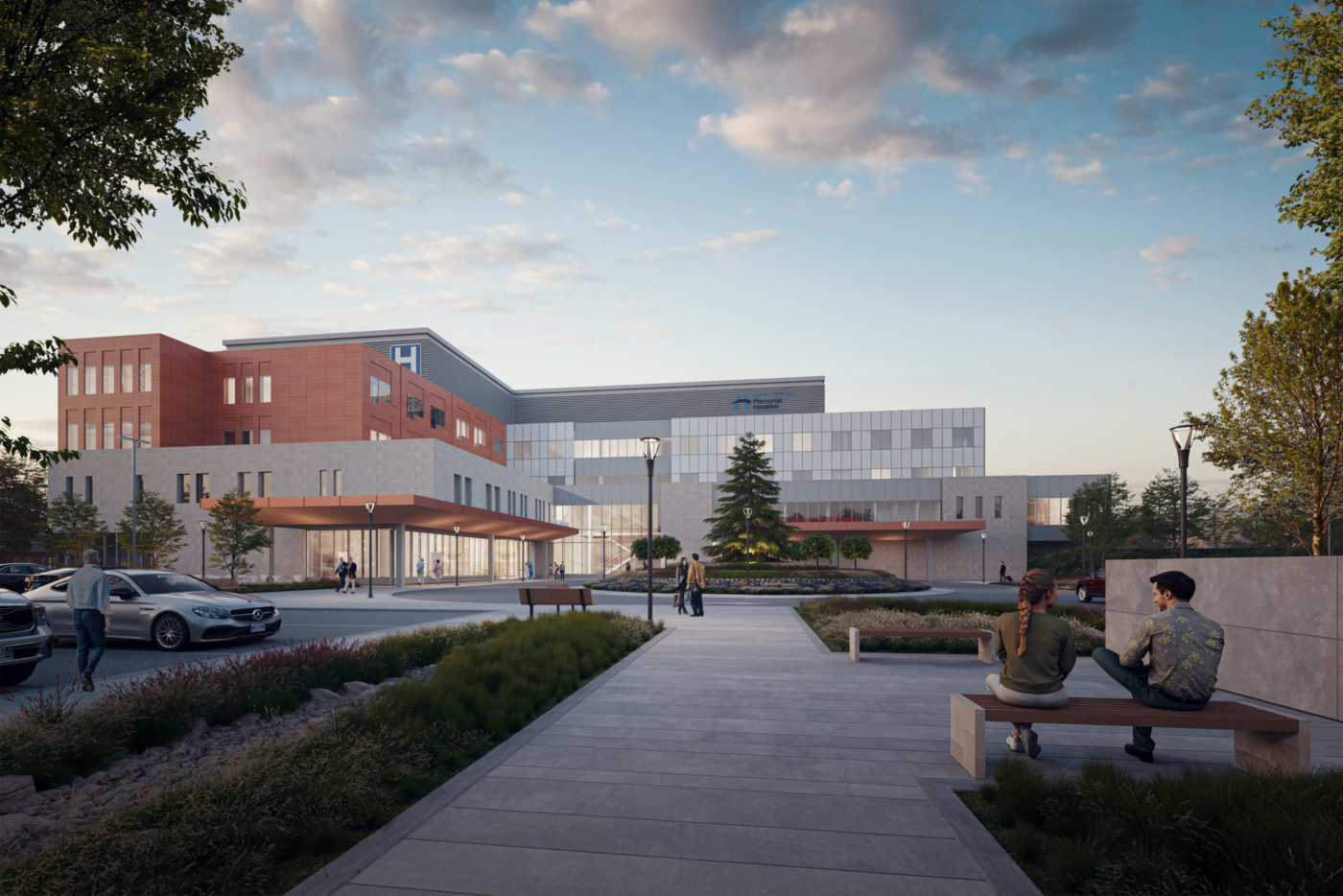
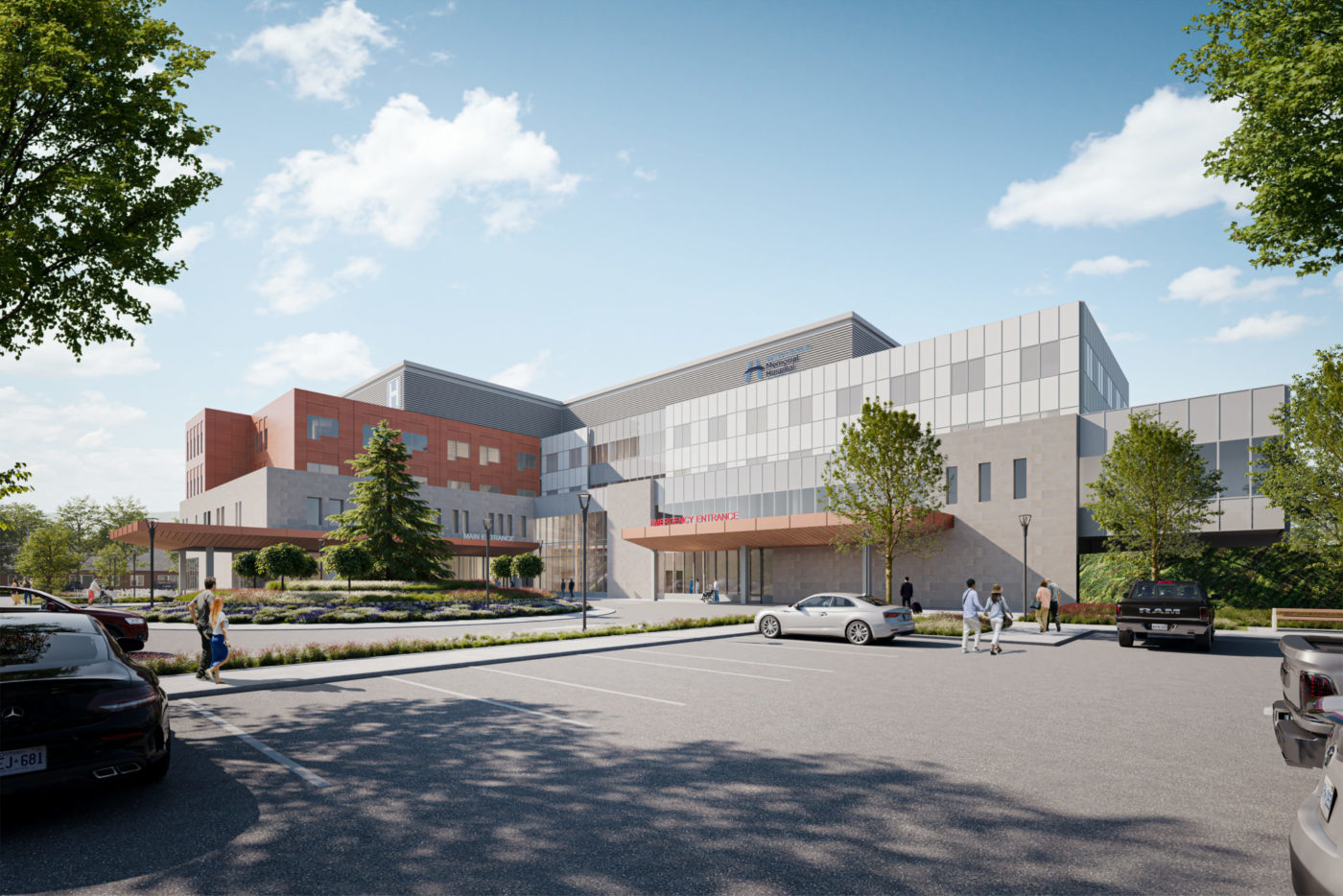
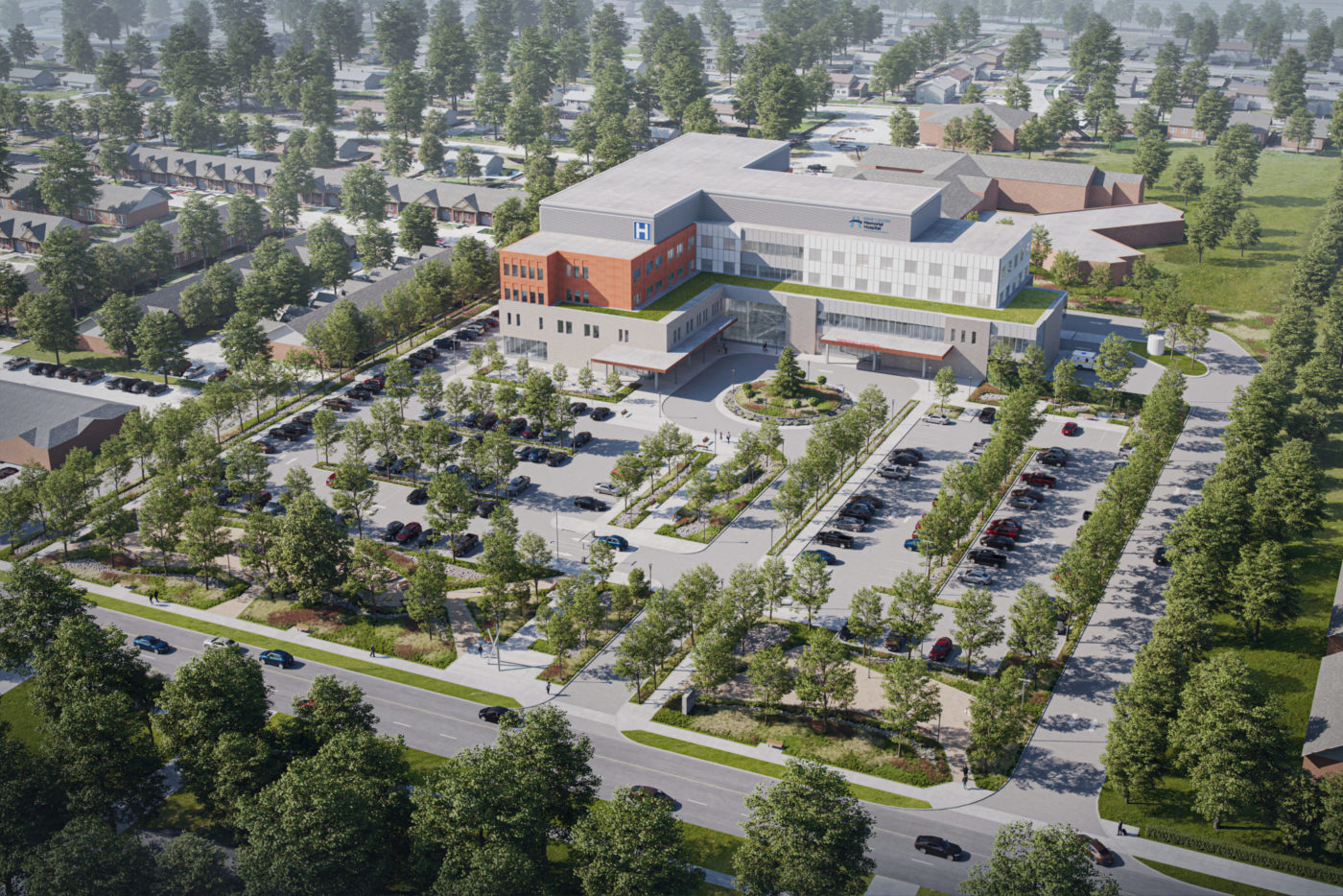
What a remarkable year 2020 has been.
As a global pandemic took hold in the community, our team at West Lincoln Memorial Hospital (WLMH) has shown incredible resilience and dedication to keep the hospital open and our patients safe.
Inside the hospital, we’ve invested heavily to upgrade the aging mechanical systems to make the building safer, until we can open the new one. The most significant safety upgrade at the site occurred in the operating rooms and endoscopy reprocessing area. Our site team and the contractor worked tirelessly during the surgical shutdown that occurred in response to the pandemic in order to renovate and reopen the operating rooms on time.
We’re also further down the path than ever before to rebuild WLMH. This year started with the government approving a detailed service plan for the new hospital, which meant we could start designing how those services will function in a brand new building. At the end of October, that plan was sent to the Ministry of Health for review. We’re now looking for a team to design and build the future hospital. This project is moving at unprecedented speed. Our goal is to keep it going.
Through it all, our community, neighbours, families, patients, staff, physicians, volunteers, partners and donors have stood beside us. We thank you for your unwavering support and generosity this and every year. Because of you, WLMH’s future has never been brighter.
On behalf of Hamilton Health Sciences, we would like to wish you a very happy, healthy and safe holiday season.
The last seven months were a whirlwind for those involved in WLMH rebuild planning. But, we got the Stage 2 plan done and sent off to the Ministry for review and approval…ahead of schedule!
It’s not a final document until the Ministry approves it, so we can’t say too much at this point. Though we’re too excited not to share some information about the plan. Here are 10 things to know about the WLMH Stage 2 submission:
Last week, Infrastructure Ontario (IO) released its fall Market Update report. The report reiterates the government’s commitment to rebuild WLMH, which we completely expected, but it’s always great news regardless. The report, however, noted for the first time that WLMH project is now included in the “$200 – $499 million” budget range, which is an increase…
Read the full story.
Building a hospital is not an everyday experience for many people, including those of us who work in the hospital! It comes with a whole bunch of lingo, jargon, roles, phrases, acronyms and processes. Luckily, we have an expert on our team who can clarify this stuff so we’re all on the same page about what’s happening in the rebuild.
See the first Ask Bart Anything video
You may have seen this video floating around on your social media feeds recently. You know, the one comparing the future WLMH to be like “driving a Tesla!” Now that we’re getting close to submitting our Stage 2 plan to the ministry, we’ve asked some WLMH leaders to share their thoughts about what this hospital means to our community and maybe a sneak peek or two about what we’re planning.
Stay tuned for more to come!
Last week, Infrastructure Ontario (IO) released its fall Market Update report. The report reiterates the government’s commitment to rebuild WLMH, which we completely expected, but it’s always great news regardless. (The WLMH rebuild project has been included in IO’s updates for almost two years.)
The report, however, noted for the first time that WLMH project is now included in the “$200 – $499 million” budget range, which is an increase from the “less than $200 million” budget range we’ve been working toward. This change on paper has encouraged some excitement in the community and beyond.
We asked our WLMH redevelopment lead for his take on this development.
“I get the excitement about this project, we’re really excited too,” said Bart DeVries, HHS director of redevelopment projects. “Based on my experience with large scale infrastructure projects, this is to be expected. It’s important to note that this development doesn’t mean there have been any significant changes to our planning. The difference between the previous budget range [<$200M] and the new budget range [$200M-$499M] could technically be $1. At the end of the day, the market will dictate what the true value of the project will be and that’s still a little way down the road.”
Budgeting for large, public-private partnership (P3) projects is a complex process with many moving parts. Ultimately the goal is to get the best value-for-money spent.
“The budget refinement process will continue as we proceed through Stage 3 toward construction. We’re still working under the original budget assumptions, which is the prudent approach. We’ve hired our costing team who are experts in budgeting for projects of this size and scope. They will tell us the anticipated project cost based on our requirements, which will be kept confidential and used to inform our plans. The private-sector teams bidding on the design-build contract for the hospital will include their project cost in their bids, which will also based on our requirements. Once a winning bid is selected by IO and HHS together, we will release the fixed-price contract value,” DeVries explained.
Many elements can influence a change in project budget, such as cost and availability of construction materials, labour and skilled trades. Time tends to drive the cost of the required elements up higher so planning needs to account for that possibility. It’s also wise to include contingency for unexpected costs, especially given the impacts the ongoing global pandemic is having and will likely continue to have on supply chains.
“These are the types of things we have been planning for since we started Stage 2 and why we always build contingency in to our projected budget,” he noted.
In terms of WLMH project timelines, we’re aiming to submit our Stage 2 plan to the ministry by Hallowe’en. The Request for Qualifications, which is the initial call for teams eligible to deliver the project, will be posted later this fall. Teams prequalified through this process will be named in early 2021, and invited to respond to a Request for Proposals later in the year.
Teams across Hamilton Health Sciences (HHS) have worked hard to support the response to the COVID-19 pandemic. Following provincial direction, this includes decreasing outpatient care, diagnostic services and non-emergency surgery, combined with moving as many non-acute patients as possible to community settings to free up hospital beds.
WLMH has played an important role in this COVID-19 capacity planning and preparations while maintaining important acute services for patients and the community. Staff and physicians have demonstrated flexibility, resilience and professionalism during this evolving situation.
Even amid the COVID-19 pandemic, progress continues to be made on infrastructure projects and new hospital planning.
While staff, physicians and hospital leaders continue to focus on the response to COVID-19, plans remain on track to meet government submission timelines.
HHS’ Capital Planning team continues to work with Infrastructure Ontario, Ministry of Health, consultants, and other partners, to advance plans for the new hospital. As soon as it is safe and practical to do so, staff and physician user groups will come together to provide input on key components of the stage 2 submission. The ongoing leadership provided by provincial and local government partners to support this work is appreciated.
Visitor restrictions in the hospital have impacted some internal work associated with infrastructure projects. However, outside the building, contractors are reaching project milestones, including:
• Commissioning the cooling tower
• Completing the wiring needed for the second generator
• Planning for lab upgrades
• Laying the concrete pad for the operating room(OR)/endoscopy area air handling unit, to be delivered on May 1, 2020.
Work also continues with the contractor to review and adapt plans for renovations, including OR and endoscopy.
The clinical team has completed the review process to select the type of CT scanner that will best serve the community. A consultant has been hired to design the space for the machine and work continues to move forward. Once plans are approved by the Ministry, and other infrastructure and OR renovations are complete, construction for the CT scanner suite will begin.
We’re so grateful for our supportive community which continues to stand with our staff and physicians during this challenging time.
| We are taking precautions at Hamilton Health Sciences (HHS) to ensure the safety of our staff, physicians, patients, families and community. More information related to COVID-19 is available here: Hamilton Health Sciences hospital information Niagara Region Public Health |
| Hospital access Visitor guidelines have changed and we have moved to a no-visitor policy with very few exceptions. Based on these guidelines, infrastructure work at WLMH, with the exception of some limited outside work, has been placed on hold. Patient care The Ministry of Health has mandated all health care facilities to postpone all non-urgent elective activity, including surgeries and non-urgent clinic visits. Some patients receiving non-urgent scheduled care may access care by phone or virtually. Elective surgeries are being postponed and perioperative services at West Lincoln are temporarily closed. This will support additional patient care capacity and availability of health care professionals in the weeks ahead. West Lincoln patients requiring urgent surgical procedures will receive care at the appropriate alternative hospital. Patients will be notified by their surgeon if their surgery is deferred. Planning for a new WLMH The Capital Planning team continues to move forward with planning for the new WLMH. Kick-off meetings took place earlier this month. Work led by non-clinical team members continues to move ahead. We remain committed to moving forward, recognizing COVID-19 presents an evolving situation and patient care requirements remain our top priority. Follow us on social media We’re sharing timely updates and shareable content on our social media channels, like this “five small acts” campaign, which is linked at the handles below. Twitter: @HamHealthSci Instagram: HamiltonHealthSciences Facebook: @HamHealthSci |
The Ontario government has given Hamilton Health Sciences (HHS) the green light to proceed to the next step (Stage 2) toward building a new West Lincoln Memorial Hospital (WLMH).
The new hospital will include inpatient services, an emergency department, maternal and newborn services, day surgical services, endoscopy, diagnostic services and ambulatory services. Regional healthcare services such as cancer and cardiac care will continue to be provided at other hospital sites.
“On behalf of Hamilton Health Sciences, I’d like to thank everyone in West Niagara for continuing to highlight the need for a new West Lincoln Memorial Hospital,” says Dr. Michael Stacey, executive vice president, academic and chief medical officer at HHS. “It is through the efforts and hard work of so many including provincial government and local leaders that this milestone has been reached.”
In the new year, HHS will build on efforts already underway to complete the Stage 2 planning process. This will include the selection of an external team of experts to help develop plans for the new hospital. Based on earlier work, and with support from hospital staff and physicians, a Functional Program will be created for the new hospital. The Functional Program will include details about the programs and services in the new facility, as well as describing workload, equipment and operational processes. The Functional Program will also profile design and spatial requirements, a project budget, project schedule and the local share financial plan.
Planning will continue to move ahead as quickly as possible and updates will be shared as the work progresses.